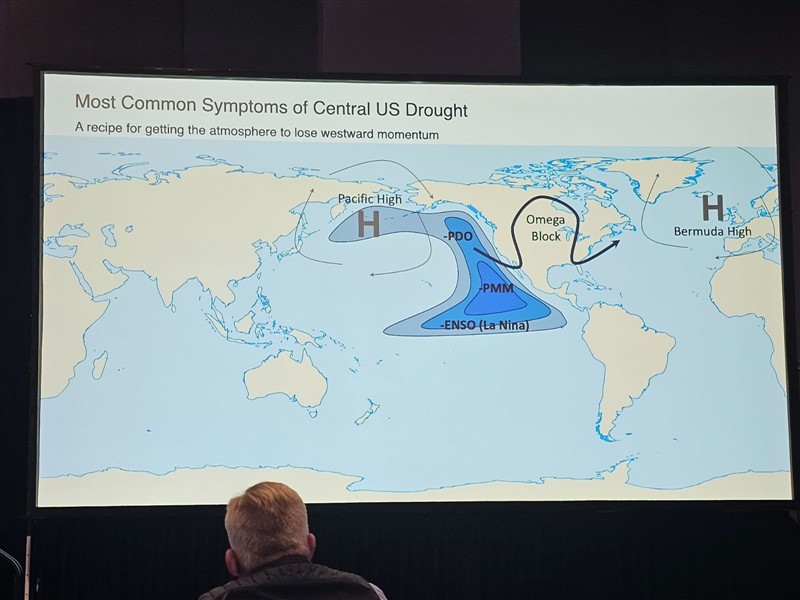Joe R - 2/13/2024 06:44
So it’s set up for a 2016 or 1988 weather/production scenario? One was a great year for production and the other was a major drought. At least he has all his bases covered.
after reading this here’s what he said..
Ha! That is a great post. Just to be clear, you aren’t the “some idiots on the internet”. That was directed at the meteorologists (not Elwyn Taylor either) that have been using drought cycles, war cycles, solar cycles, cycles-cycles-cycles to put fear into the ag sector and make people think that they should take a long position in the markets. It is of my opinion that these kinds of scare tactics often make us miss opportunities in the markets to execute a well planned market strategy given the global supply/demand. The reality is that money managers, the funds, the USDA, other governments, and commodity traders ARE NOT looking for black swans – they are looking at market dynamics and capitalizing on the current position and any near term market volatility. While in my research I can’t find the same cyclical behavior in drought that Elwyn Taylor found does mean there can’t be a drought episode in 2025. All Central US (Plains/Midwest) drought episodes are the result of a loss of momentum in the jet stream flow, the displacement of either the Pacific High or Bermuda High, and the building of a large blocking ridge in the Central US. The only pre-season indicators for increased drought risk are winter/spring soil moisture deficits and cold water off the West Coast. I just can’t find evidence for cyclical behavior in drought. Plus, the 89-year cycle does not account for drought episodes that happen in-between. Drought can happen at any time during the normal 11-, 22-, and ~90-year solar cycles. Drought is simply not well enough correlated with solar cycles to use them as a predictor. Here is a history of wet and dry episodes for the states highlighted in the map since 1895.
Eric Snodgrass
Edited by JonSCKs 2/13/2024 08:10
 (EB767ED1-D63F-405B-85FE-943B1ACBA157 (full).png) (EB767ED1-D63F-405B-85FE-943B1ACBA157 (full).png)
 (20240207_143104 (full).jpg) (20240207_143104 (full).jpg)
Attachments
----------------
 EB767ED1-D63F-405B-85FE-943B1ACBA157 (full).png (158KB - 169 downloads) EB767ED1-D63F-405B-85FE-943B1ACBA157 (full).png (158KB - 169 downloads)
 20240207_143104 (full).jpg (83KB - 125 downloads) 20240207_143104 (full).jpg (83KB - 125 downloads)
| 

 Eric Snodgrass
Eric Snodgrass